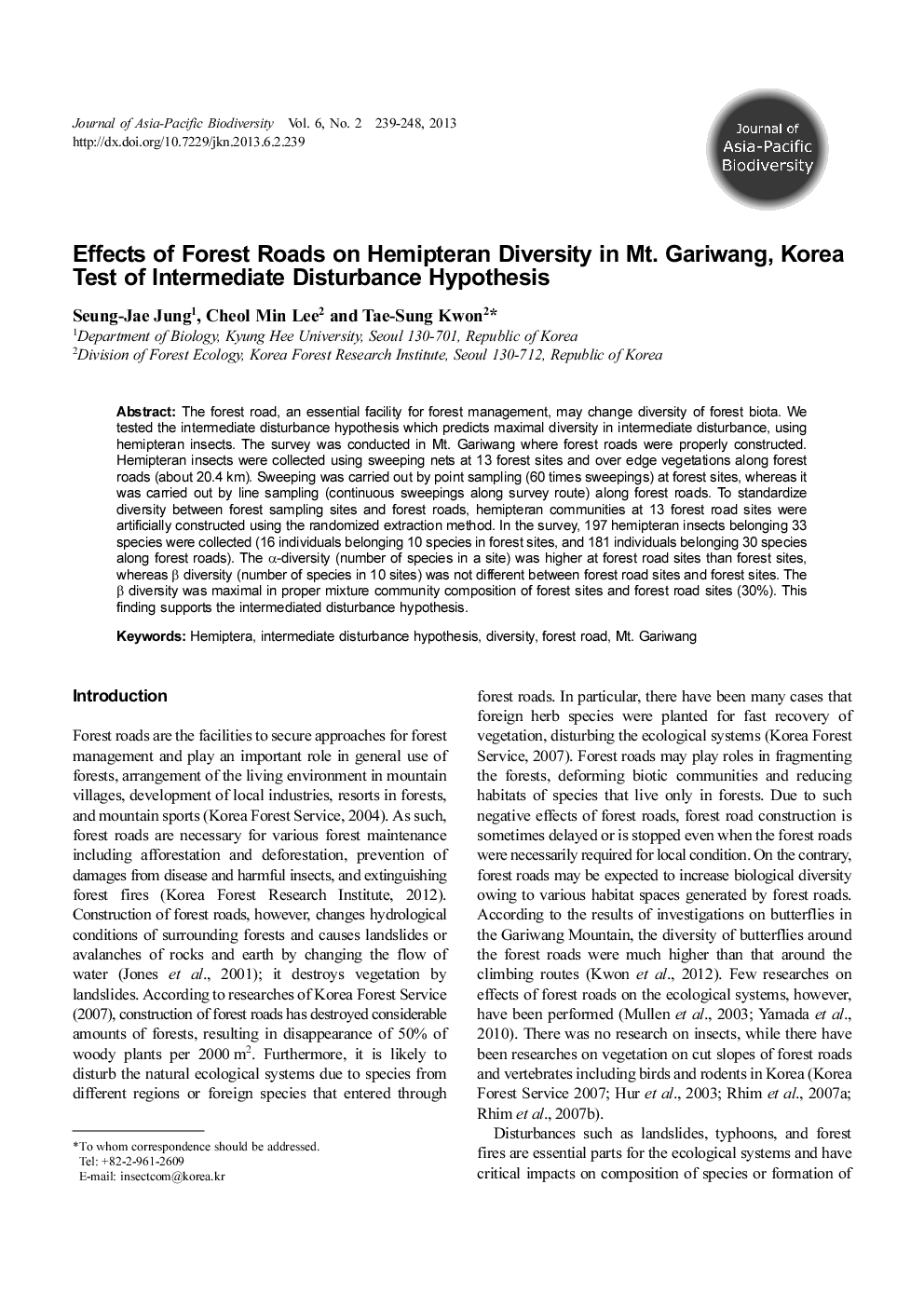| Article ID | Journal | Published Year | Pages | File Type |
|---|---|---|---|---|
| 4395076 | Journal of Asia-Pacific Biodiversity | 2013 | 10 Pages |
The forest road, an essential facility for forest management, may change diversity of forest biota. We tested the intermediate disturbance hypothesis which predicts maximal diversity in intermediate disturbance, using hemipteran insects. The survey was conducted in Mt. Gariwang where forest roads were properly constructed. Hemipteran insects were collected using sweeping nets at 13 forest sites and over edge vegetations along forest roads (about 20.4 km). Sweeping was carried out by point sampling (60 times sweepings) at forest sites, whereas it was carried out by line sampling (continuous sweepings along survey route) along forest roads. To standardize diversity between forest sampling sites and forest roads, hemipteran communities at 13 forest road sites were artificially constructed using the randomized extraction method. In the survey, 197 hemipteran insects belonging 33 species were collected (16 individuals belonging 10 species in forest sites, and 181 individuals belonging 30 species along forest roads). The α-diversity (number of species in a site) was higher at forest road sites than forest sites, whereas β diversity (number of species in 10 sites) was not different between forest road sites and forest sites. The β diversity was maximal in proper mixture community composition of forest sites and forest road sites (30%). This finding supports the intermediated disturbance hypothesis.
